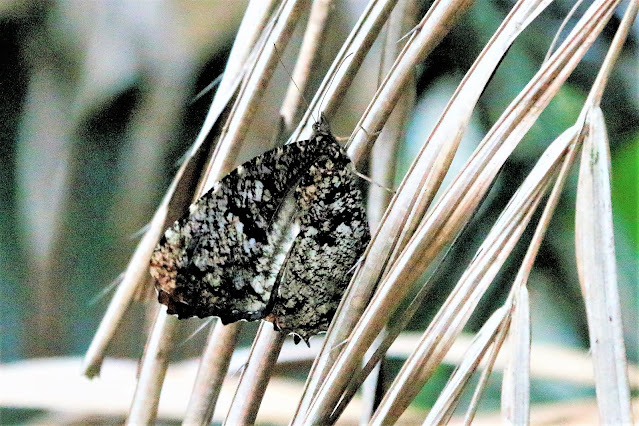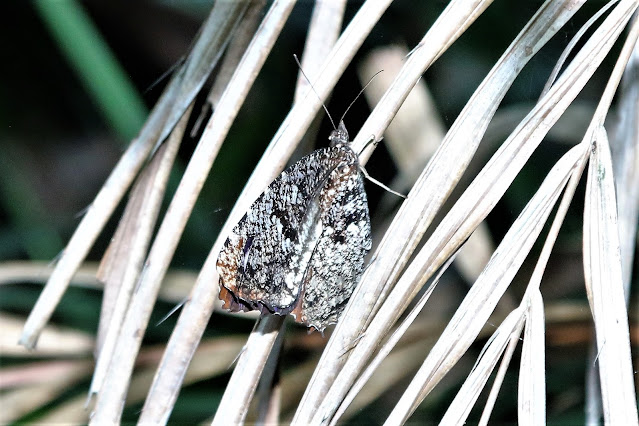Skippers are little butterflies from the family "Hesperiidae". They are tiny little insects which you can sometimes spot stationing itself quietly on an exposed leave beside the forest trail or sometimes you can just see them zipping past you like a rocket. Here are some of them which were seen in a lowland forest patch.
Gem Demon (Ancistroides gemmifer gemmifer)
This is a rather uncommon skipper. It is differentiated from other "Bobs" by its pale purplish spots on its underside which can be clearly seen here.
Bright Orange Palm Dart (Telicota augias augius)
They can be quite common in the open areas of forest trail.
Coconut Skipper (Hidari irava)
It has been awhile since I last saw the above skipper. Reported to be common in residential areas where you can find its namesake plant. Apparently at one time it is also considered a pest.
Malayan Yellow-veined Lancer (Pyroneura latoia latoia)
This skipper did not stay long enough for me to get a good shot. It flew just above my feet and stayed for less than a minute. Skittish indeed. Reported to be uncommon and localised.
Correction: this is a Sumatran Bob (Arnetta verones)
This is quite a large size skipper at 2.3cm. Essentially a forest skipper but can be commonly found.
Peninsular Ace (Halpe pelethronix)
Most likely a common lowland skipper as I have seen them on many occasions.
Indian Palm Bob (Suastus gremius gremius)
Although reported to be common, this is the first time I have manage to photographed this species.
Fullstop Swift (Caltoris cormosa)
You can indeed see some tiny "full stop" marks above its forewing area (i.e between space 4 and 5).
Common Palm Dart (Telicota colon stinga)
As its name suggests, it is most likely one of those common dartlets.
Brown Bob (Psolos fuligo fuligo)
A common forest skipper
Lesser Dart (Potanthus omaha omaha)
Bright Red Velvet Bob (Koruthaialos sindu sindu)
AHOY ! SKIPPERS !





















































